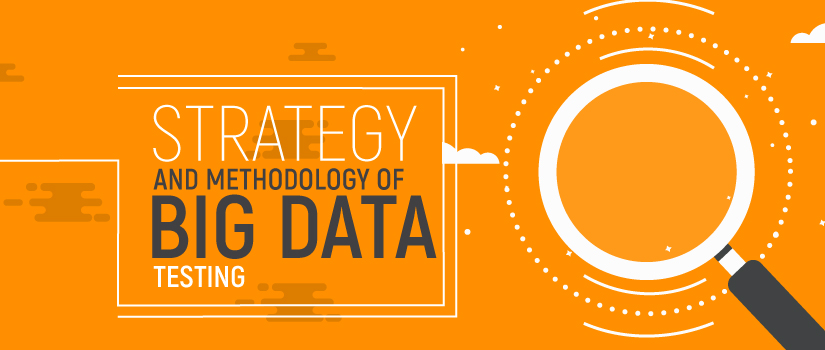When data mining and handling techniques are not useful and are unable to expose the insights of large data, unstructured data or time-sensitive data, another aspect is used which is new to the realm of software industries.

This approach is known as big data that uses intense parallelism. Big data is embraced by many companies that involve in-depth testing procedures.
What is Big Data?
Big data can be referred to as a huge volume of structured and unstructured data that are accumulating in businesses on a daily basis.
It cannot be easily processed using the same old methods of extracting information because most of the data is unstructured.
Using various tools and testing frameworks, big data can be analyzed for insights and helps businesses to make better business strategies and decisions.
Big Data Testing
Big data testing can be referred to as the successful verification of processed data by simply using commodity cluster computing and other essential components.
It is the verification of processing data rather than testing the specification of any application.
Testing of big data requires a set of high testing skills as the processing can be very fast and it mainly depends on two valuable keys for testing, i.e. performance and functional testing.
Essential Necessities In Big Data Testing
Big data testing needs some aspects to run tests smoothly. Thus, below is the list of following needs and challenges which makes it vital for big data applications to run their tests smoothly.
- Multiple Sources for Information: For the business to have a considerable amount of clean and reliable data, the data should be integrated from multiple sources. With the help of multiple sources of information from different data, it has become easier to integrate this information. This can only be ensured if the testing of the integrators and data sources is done through end-to-end testing.
- Rapid collection of Data and its Deployment: Data should be collected and deployed simultaneously to push the business’s capabilities to adopt instant data collection solutions. Also, with the help of predictive analytics and the support of taking quick decisive actions, it has brought a significant impact on business by embracing these solutions of large data sets.
- Real-Time Scalability Challenges: Hardcore big data testing involves smarter data sampling, skills, and techniques that can perform various testing scenarios with high efficiency. Big data applications are built in such a way that it can be changed and used in a wide range of capabilities. Any errors in the elements which produce big data applications can lead to difficult situations.
Testing of Big Data Applications
Testing of big data applications can be further described in the following steps:
1. Data Staging Validation: The first stage also referred to as a Pre-Hadoop stage which involves the process of big data testing.
Also Read : Top 25 Software Testing Companies to Look Out For in 2018
- Data should be first verified from different sources such as RDBMS, social media posts, blogs. It will ensure that only correct data is extracted into the Hadoop system.
- The data which is received in the Hadoop system should be compared with data of different sources to ensure similar data is received.
- Also, you need to verify that only the correct data that is received should be supplied to the HDFS location in Hadoop.
2. Map Reduce Validation: the Second stage comprises the verification and validation of Map Reduce. Usually, testers perform tests on business logic on every single node and run them on every different node for validation. These tests are run to ensure:
- Valuable key pair’s creation is present.
- Validation of data is done after the completion of the second
- The process of map reducing is working properly.
- Data aggregation or data segregation are implemented effectively on the data.
3. Output Validation Phase: This is the third and final stage of big data testing. After successful completion of stage two, the output data files are produced which is then ready to be moved to the location as per the requirement of the business. Initially, this stage includes processes such as:
- Checking and verifying the transformation rules are applied accurately or not.
- It verifies and checks whether the data loaded into the enterprise’s system is loaded successfully or not. Also, it verifies the integrity of the data during the loading procedure is maintained.
- The last process would be verifying and checking the data which is loaded in the enterprise’s system is similar to the data present in the HDFS file system in Hadoop. Also, it ensures that there is no corrupt data in the system.
Challenges in Big Data Testing
Following are the challenges faced in big data testing:
- Automation Testing is Essential: Since the big data involves large data sets that need high processing power that takes more time than regular testing, testing it manually is no longer an option. Thus, it requires automated test scripts to detect any flaws in the process. It can only be written by programmers that mean middle-level testers or black box tester needs to scale up their skills to do big data testing.
- Higher Technical Expertise: Dealing with big data doesn’t include only testers but it involves various technical expertise such as developers and project managers. The team involved in this system should be proficient in using big data frameworks such as Hadoop.
- Complexity and Integration Problems: As big data is collected from various sources it is not always compatible, coordinated or may not have similar formats as enterprise applications. For a proper functioning system, the information should be available in the expected time and the input/output data flow should also be free to run.
- Cost Challenges: For a consistent development, integration and testing of big data require For business’s many big data specialists may cost more. Many businesses use a pay-as-you-use solution in order to come up with a cost-saving solution. Also, don’t forget to inquire about the testing procedure, most of the processes should include automation tests otherwise it will be taking weeks of manual testing.







